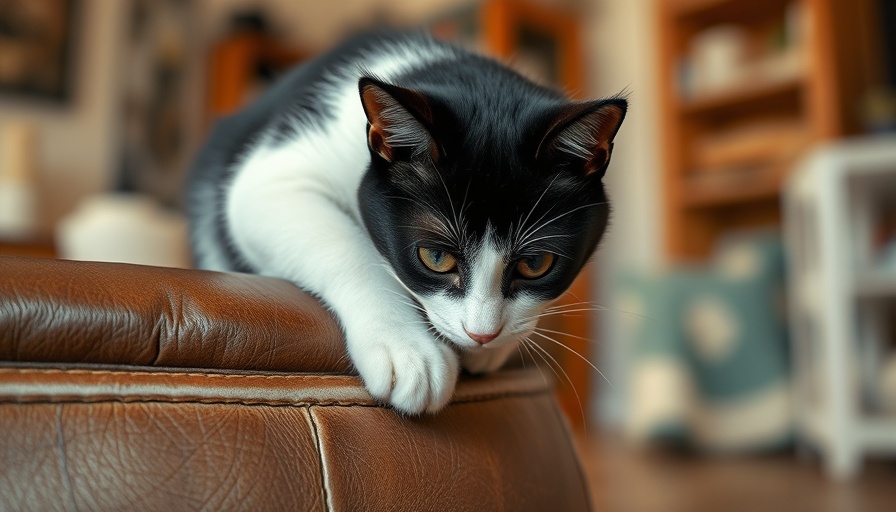
Understanding Your Cat's Behavior: The Why Behind Scratching
Scratching is a natural behavior for cats; it serves multiple essential functions in their day-to-day lives. Kittens and adult cats alike scratch to mark their territory, stretch their muscles, and shed old claw sheaths. Understanding this behavior is crucial for pet owners, as it allows us to provide appropriate outlets, rather than merely seeking to eliminate the habit.
Creating a Cat-Friendly Environment
Transforming your home into a sanctuary for your feline friend can significantly reduce the urge to scratch furniture. Providing designated scratching posts made of different materials such as sisal, cardboard, or carpet can cater to your cat's preferences. Place these posts in areas where your cat frequently scratches to draw them away from your cushions and coffee tables.
Training Techniques That Work
Training your cat can take time, but with patience and consistency, you’ll see improvements. Positive reinforcement is a powerful tool. Whenever you catch your cat scratching a designated post, reward them with treats or affectionate praise. This encourages them to associate scratching inappropriately with negative feelings and scratching in the right places with positive reinforcement.
Using Deterrents Wisely
If your cat remains persistent, consider using furniture-safe sprays designed to deter scratching. These sprays often contain scents that are unappealing to cats but pleasant for humans. Fitting furniture covers or using double-sided tape on armrests can also provide a physical barrier, making the surface less appealing to scratch.
The Role of Nail Trimming
Regular clipping of your cat’s nails can curb the damage done by scratching. It’s a simple task many cat owners can accomplish at home with the right tools. With gentle encouragement and occasional treats, you can even make nail trimming a positive experience, reducing anxiety for both you and your feline.
Encouraging Play and Enrichment
Engage your cat in regular playtime to keep their instincts sharp and their energy levels in check. Interactive toys, laser pointers, and feather wands can provide excellent alternatives to scratching furniture. Additionally, consider incorporating puzzle feeders that stimulate their minds, redirecting attention away from the furniture.
Understanding Your Unique Cat
Every cat is different, and what works for one may not work for another. It might take some trial and error to find out which deterrents or techniques are most effective for your pet. Be attentive to their preferences and tailor your approach accordingly, celebrating small victories along the way.
Seeking Professional Help
If all else fails and your cat's scratching habit persists, don't hesitate to reach out to a veterinarian or an animal behaviorist. They can provide insights and recommendations tailored to your unique situation, ensuring your pet’s environment is supportive and harmonious.
Call to Action: Start Now! Your Cat Will Thank You
Implementing these strategies can lead to a happier home with happier pets. Don’t wait – start making these adjustments today, and watch as your furniture remains unharmed and your cat finds joy in the designated scratching areas you’ve created.
 Add Row
Add Row  Add
Add 


Write A Comment